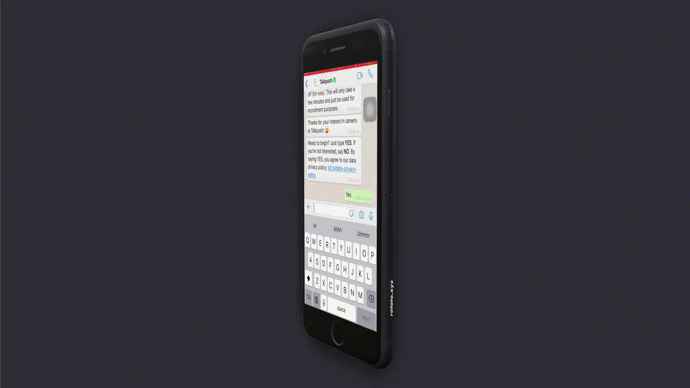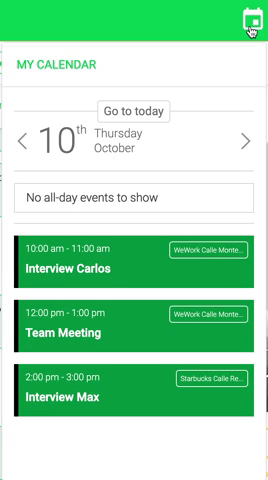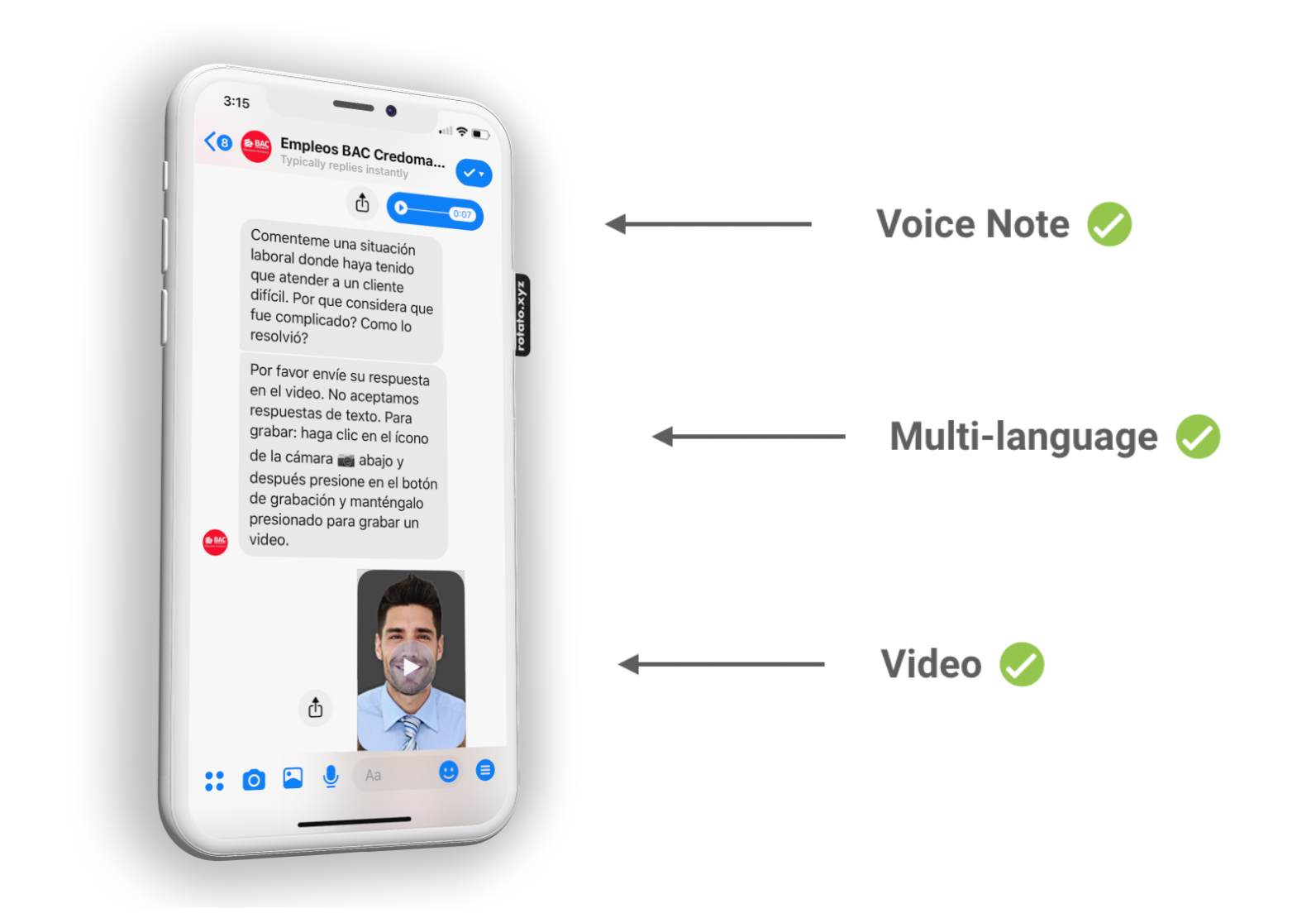The future of recruitment lies in Robotic Process Automation (RPA), but business processes can’t change overnight. Here’s a quick guide on where to start.
.jpeg?width=1920&name=1_B96iQctx7AePs-0LxhyBMw%20(1).jpeg) Recruiters now have access to a bigger talent pool than ever before. With the rise of social media recruitment and online professional communities like Github and Freelancer, the talent pool has expanded — and with it processing volumes for TA professionals across all categories. Since there’s only so many hours in the day, recruiters are increasingly turning towards automating the most tedious tasks, giving themselves the time they need to to handle a deeper pool of candidates, honing in on the most qualified, without losing out on delivering a top-notch candidate experience.
Recruiters now have access to a bigger talent pool than ever before. With the rise of social media recruitment and online professional communities like Github and Freelancer, the talent pool has expanded — and with it processing volumes for TA professionals across all categories. Since there’s only so many hours in the day, recruiters are increasingly turning towards automating the most tedious tasks, giving themselves the time they need to to handle a deeper pool of candidates, honing in on the most qualified, without losing out on delivering a top-notch candidate experience.
To stay competitive, businesses should automate workflows, and explore how each stage of the recruitment funnel could be accelerated. But, to get here, you may want to ease into it, automating only one or two functions first, while working towards an end-to-end rollout.

Here’s a blueprint for that step by step approach:
1. First contact:
Use a recruitment chatbot that your candidates can interact with effortlessly to apply to any position. This conversational agent will ease candidates along the application process, keeping them informed on their status, answering FAQs, and being your conduit for re-engagement campaigns. Our data indicates that the completion rate for job applications through a Messenger or Whatsapp bot is above 95%, much higher than the traditional online applications, which often require human assistance from recruiters to compensate for the poor candidate UX of an aging ATS.

Research has shown that almost 50% of candidates drop off when they’re required to manually type in their resumes. Keep in mind that more than a third of applications typically come outside of standard working hours (nights and weekends), so having a chatbot on duty 24/7 will yield outsized return on investment if you’re looking to build for a deeper talent pool.
2. Pre-Screening:
Now that you’ve got yourself a friendly bot helper, you can set it up to screen your candidates before investing precious recruiter time with them. You may want to start with a simple observational research: how are your recruiters and hiring managers deciding which applications to keep, which ones to ignore? You may find that some of the screening that happens is not something you could infer from the job description (e.g. they may not want to hire candidates coming from certain companies). Adding those screening questions as part of the campaign will immediately relieve the team of manual work. You can then automatically shortlist candidates based on level of education, relevant work experience or location. The ones who don’t meet the basic criteria can be automatically rejected — and notified — without your recruiters ever having to step in.
Collecting this data digitally (vs. over a phone call) also means you will be able to search it and use it for future sourcing campaigns.
3. Consolidating data:
Having all your candidate information (completion and engagement rates, response times, qualifications, etc), as well as job campaign performance per channel, all in one place gives recruiters a definitive edge. Unfortunately, recruiters are often spending way too much time logging into multiple platforms and scraping data off of each of them. Why? Probably these systems of record were purchased without any budget (or thought?) being allocated to system integration.

With most systems now having rich APIs (here is ours) system integrations are not as expensive as they used to be, which means you might be able to give your recruiters some of that time back with a quick integration. A proper CRM should offer them a unified view of all the candidate data, from the ATS, social media, events, assessment platforms, and every other system involved in the candidate journey. A fully digital process also yields tons of new data (e.g. how many times did the candidate reschedule a meeting? How long does it take for them to complete the screening? etc.) which can be used to fine-tune the screening and speed things up further.
4. Interview Scheduling:
One of the easiest things to automate is also one of the most time-consuming and frustrating tasks of recruiters: scheduling interviews. A simple calendar integration with your CRM, which candidates can access as soon as they are (automatically) shortlisted can free your recruiters from having to send endless back and forth emails to shortlisted candidates trying to nail down the right time for a phone or in-person interview. By automating this task, recruiters can send candidates a link to self-schedule according to available slots, and have their calendars constantly in sync with all of their interviews. This eliminates human error and facilitates notifications of cancellations, changes, and reminders of when the interview is coming up. This automation can reduce your average time to hire by a few days.

Having scheduling digitized also means you can automate all the “anti ghosting” workflows, sending reminders to candidates ahead of interviews, and rescheduling them when they are no-shows. Talk about capitalizing on missed opportunities, huh?
5. Assessments:
We would not recommend automating the actual interview, there’s too much value in a skilled human recruiter to evaluate if a candidate is the right one for the job. And, we don’t buy into the whole AI-promised land of facial recognition to screen for certain emotions… But even without relying on futuristic AI, there are great time-savings to be generated from collecting and sending data using a chatbot. You can ask candidates to send rich media (video or voice responses), so that recruiters can review them in bulk later on. Asynchronous conversations are much more efficient than manually sifting through resumes, participating in phone interviews, or video conferences to paint a complete picture.

Most employers did not wait for RPA or for chatbot technology to automate assessments, but they often struggle to get their candidates to complete those online assessment in a timely manner, and have to resort to human intervention with recruiters guiding the candidates through the process. This is a process which is perfect for chatbots on the preferred messaging platform of your target market (e.g. SMS in the US, Messenger in the Philippines, WhatsApp in India). A chatbot platform like Talkpush supports bi-directional integration with many assessment platforms, such as CrossKnowledge, HireIQ, etc.
6. Pre-onboarding:
You’ve sourced hundreds (or thousands) of candidates. You’ve screened them, interviewed them, collected heaps of data, and made the best decision you can make, finally giving your chosen candidate the employment contract. And miracle of miracles: she agreed to sign it! This is how far most recruiters are willing to go, forgetting that 10 to 30% of candidates will vanish from the time they sign the contract to their actual start date. This type of “ghosting” (between the signing of the contract and the start of the work) is often under-reported and misunderstood. While it will never be completely eliminated (situations change, and candidates should do what is in their best interest at any given time), it can be significantly reduced by constant engagement with the candidates throughout this period. Recruiters don’t usually have the time for this, as they are already working on their next requisition, so this is a perfect opportunity to create an automated workflow to stay top of mind and to anticipate questions from new hires.
Automating communications — which means freeing up the recruiters to do more high-touch work— can reduce hours of work and job satisfaction for recruiters. As much as possible, get the recruiters involved in designing the messaging so that it reflects their voice and personality, and they can feel the bot serves as an extension of themselves, not as a soulless replacement.
May the bots be with you! 🤖


